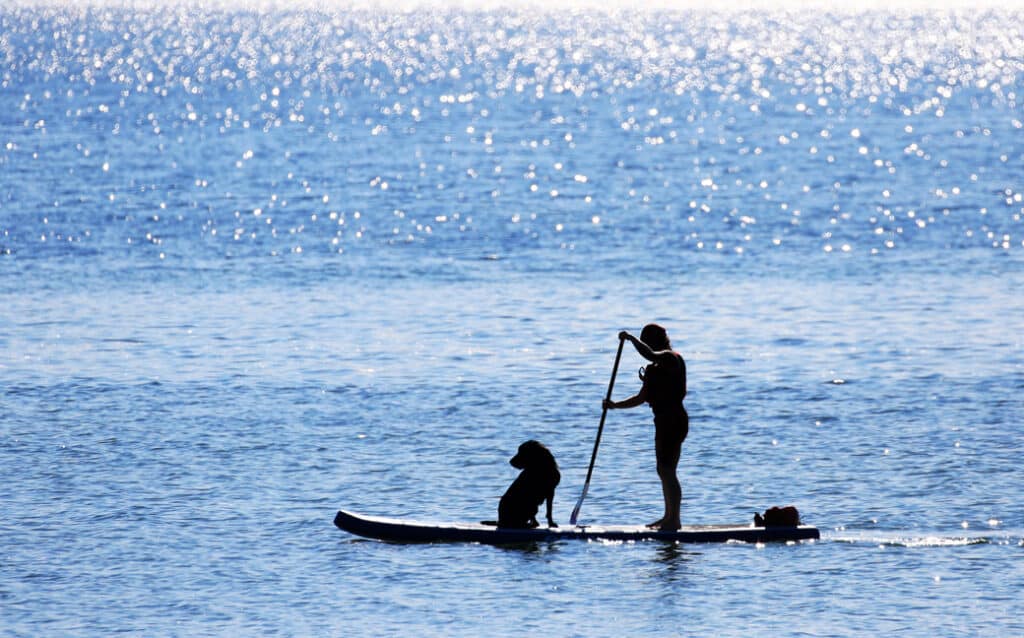
With 11,842 lakes and 69,200 miles of rivers and streams, it’s not hard to find somewhere to go stand-up paddleboarding in Minnesota. And in my opinion, the very best place to paddle is northeast MN.
Although I have lived here most of my life, it wasn’t until we were in our thirties that my husband and I started camping and canoeing. Even though we got a late start, we were hooked on paddling after our first trip to Bear Head Lake State Park. We rented canoes for years and eventually bought one of our own. It didn’t take long before we added a kayak to the mix. As stand-up paddleboarding rose in popularity I thought it looked fun and I was interested in trying it. But it didn’t seem practical, like a canoe or kayak. Then one summer while camping with friends, we had the opportunity to use their paddleboards and I immediately understood why they’re so popular.
Stand-up paddleboards are not the most efficient watercraft to paddle. And they’re not the most practical for backcountry camping—unless you’re this guy. But for everything they lack, they make up for in F-U-N! In addition to being a blast to paddle, stand-up paddleboarding is a fantastic full-body workout. Then after you push yourself, paddling across a lake or up a river, there’s no better vessel for sitting or lying down so you can relax and chill.

Stand-up paddleboarding in northeast Minnesota
Of all the wonderful watersports I enjoy during our short Minnesota summers, one of my favorites is stand-up paddleboarding.
As I mentioned in a recent Bucket List article, the last two decades of exploring Minnesota’s Arrowhead region have made my husband and me full-blown water snobs. We’re pretty picky about where we swim, fish, and filter water for drinking—even here in Minnesota. So it’s no surprise that most of our water-based activities take place in northeast Minnesota.
The next reason you should plan a stand-up paddleboarding trip in northeast Minnesota is the breathtaking beauty. Located on the southernmost edge of the boreal forest ecosystem, the diversity of the flora and fauna is mesmerizing. The rocky landscape in and of itself is remarkable but becomes unforgettable during sunrise and sunset. Be sure to stick around long enough to witness some of the most incredible dark skies while you’re there.
Although the region has become popular in recent years, much of it is still quite remote. The jewel of the region—the Superior National Forest—covers three million acres with 15 percent of that being water. A good portion of the forest is only accessible by path or paddle. So even on the busiest summer weekends, it’s still possible to find solitude.
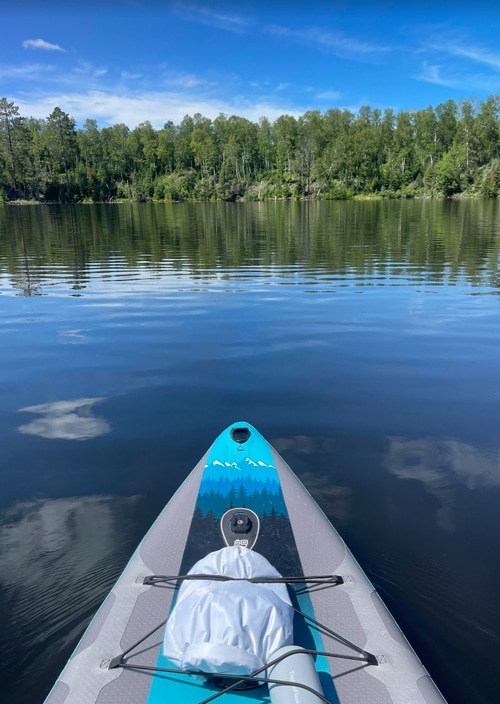
How to get started stand-up paddleboarding
I’d like to offer some tips for those of you who are new to stand-up paddleboarding. Consider this a very basic overview. If you’re just getting started, I’d suggest doing a bit more research before you get out on the water.
The body of water you choose matters. Start in smaller lakes on calm days and pay attention to the weather. If the wind picks up, your body becomes a sail. It’s super fun when the wind is at your back, but not so much when you’re paddling into it. Also, pay close attention to high water and fast currents. I would recommend avoiding rivers and streams until you’re confident with your skills and abilities. When I paddle these waterways, I always paddle against the direction the river is flowing first. That way I know when to call it quits and am certain to have enough energy to safely get back to where I started.
I must admit that I do a lot of outdoor activities on my own. And I’ll also admit that it’s always safer to adventure with others. Bring a buddy if you can and avoid paddling at night. When I’m solo, I always use my PFD (personal floatation device) and the leash that’s attached to the board in case of a fall. Stay close to the shore, especially if there’s boat traffic or wind. And don’t forget sun protection and drinking water.
You can use your own stand-up paddleboard or rent one. In preparing for this article, I did a quick web search and was surprised to see how many outfitters offer stand-up paddleboard rentals. Prices range from 30 to 40 dollars per day and are available throughout the region in Ely, Duluth, the North Shore, and even the Gunflint Trail.
Where to go stand-up paddleboarding in Northeast Minnesota
I’ve paddled A LOT of lakes and rivers in northeast Minnesota. At this point, it’s too many to count, and still, I feel like I’ve barely scratched the surface. While compiling this list, I found it difficult to narrow it down to just five spots. I chose these five because they’re particularly great for beginners and offer other special features. But don’t stop here. There’s an abundance of wonderful lakes in northeast Minnesota that are perfect for stand-up paddleboarding.
1 – Bear Head Lake State Park
Just 20 miles southwest of Ely, Bear Head Lake State Park is the best place to try stand-up paddleboarding because they rent paddleboards at the park. There’s no need to drive to an outfitter, strap boards to the top of your vehicle, and hurry back before they close. For just 10 dollars per hour, you’ll be supplied with all the basics and have the added convenience of an easy launch and take-out. Although Bear Head is a bigger lake, you’ll find quiet bays to escape the wind and most of the boat traffic–which is limited to 10 miles per hour. A great place to start is the North Bay. Be sure to keep your eyes peeled for beavers if you’re out around sunset. A large swimming beach and picnic area are close by to top off a perfect day of paddling. You can learn more about Bear Head Lake State Park here.
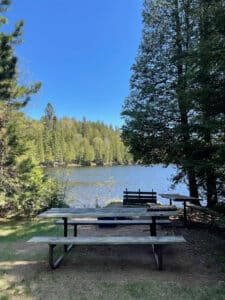
2 – Benson Lake, George H. Crosby Manitou State Park
Sticking with Minnesota State Parks, George H. Crosby Manitou is one of our household’s favorites. Upon establishment in 1955, a decision was made to intentionally limit development. That, and the rugged terrain, keep the crowds at bay even though it’s just 20 miles northeast of Silver Bay. You won’t have to worry about boats on this non-motorized trout lake. And there’s a pretty good chance you’ll have Benson Lake all to yourself. After your paddle, stroll the 1-mile loop trail around the lake and relax in the quiet lakeside picnic area. You can find everything you need to know about George H. Crosby Manitou State Park here.
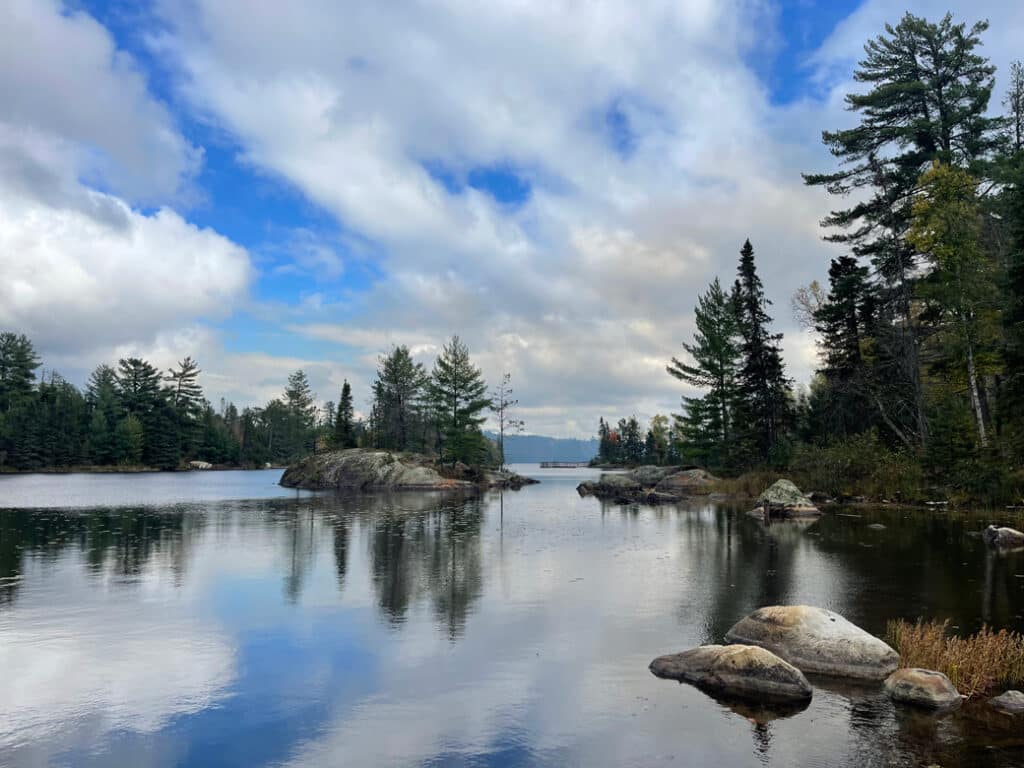
3 – Fenske Lake
Heading back toward Ely and the Superior National Forest, Fenske Lake takes the number three spot for its jaw-dropping beauty. Paddling around this small 100-acre lake, you’ll feel like you’ve entered one of those breathtaking postcards of the Boundary Waters Canoe Area Wilderness or Voyageurs National Park. But you’ll also enjoy the convenience of reliable cell service and the town of Ely just 12 miles away. After your paddle, you can enjoy a picnic lunch at the small, but lovely, beach and picnic area in the campground. More information about Fenske Lake is available on the Forest Service’s website here.
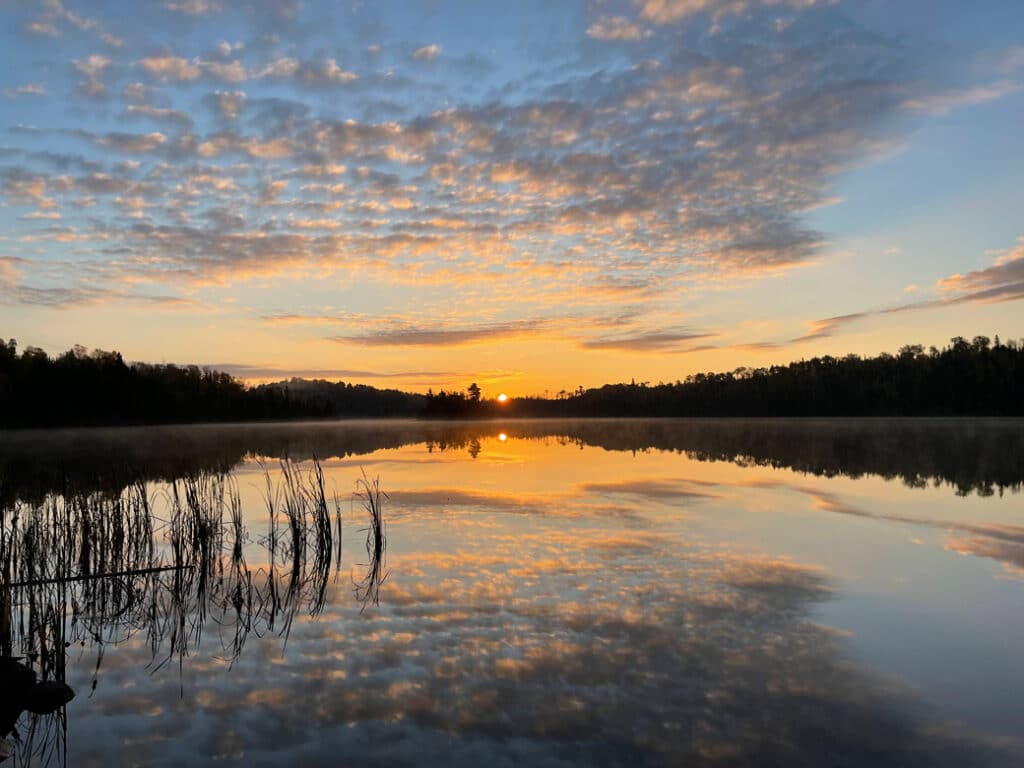
4 – Flour Lake
Less than 30 miles up the Gunflint Trail you’ll find the long and narrow Flour Lake. Flour Lake will always hold a special place in my heart since it’s the first place we tent camped in my favorite national forest. It’s not just nostalgia though. I recently visited for a camp and a paddle and enjoyed it just as much—if not more—as I did many years ago. Situated on the edge of the wilderness, Flour is a quiet lake with plenty of camping and services nearby. It’s especially wonderful in the fall. Don’t miss the short but steep hike up to Honeymoon Bluff on your way back to the Gunflint Trail. You can find more information about Flour Lake here.
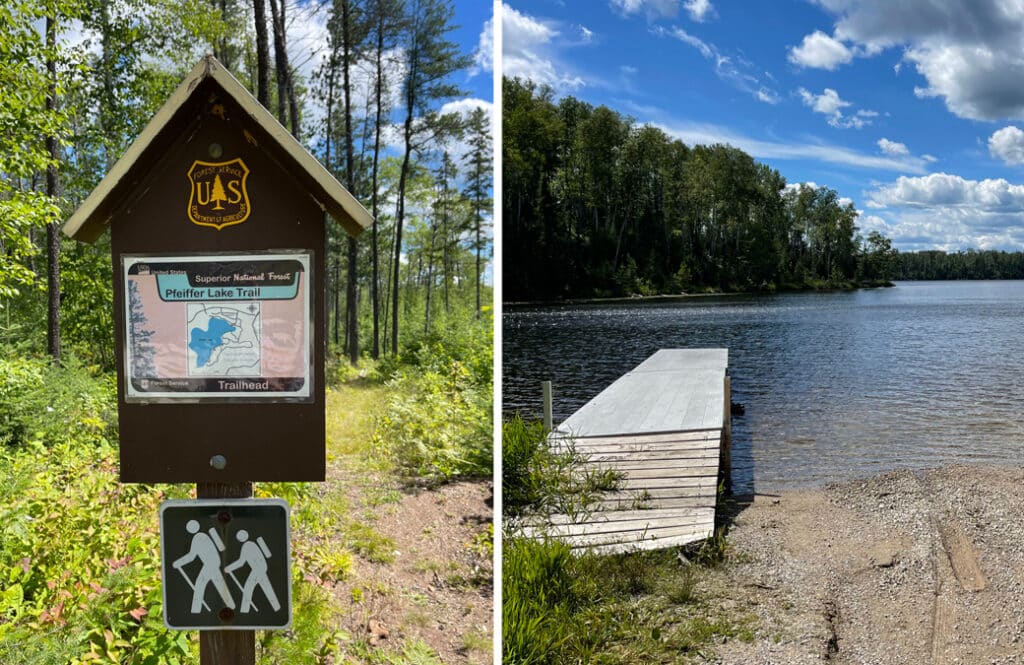
5 – Pfeiffer Lake
The final lake is one that you’ve probably never heard of. And if you have, you’re likely a bit perturbed to see it on a top-five list. This is one of my favorite lakes to get away from it all. This small quiet lake is especially sublime midweek when you’ll likely have it all to yourself. There’s a short hiking trail that’s worth exploring, especially during blueberry season. The recreation site also features a lovely beach and picnic area to relax after a fun day of stand-up paddleboarding. Pfeiffer Lake is 30 miles north of Virginia with limited services nearby, so bring everything you’ll need. Additional information is available on the Forest Service’s website here.
Stand-up paddleboarding is a fun way to stay in shape and make the most of our fleeting summers. And there’s no better place to paddle than northeast Minnesota. With clean lakes, breathtaking scenery, and outfitters to meet your every need, paddleboarding in northeast Minnesota is one more must-do for your summer bucket list.
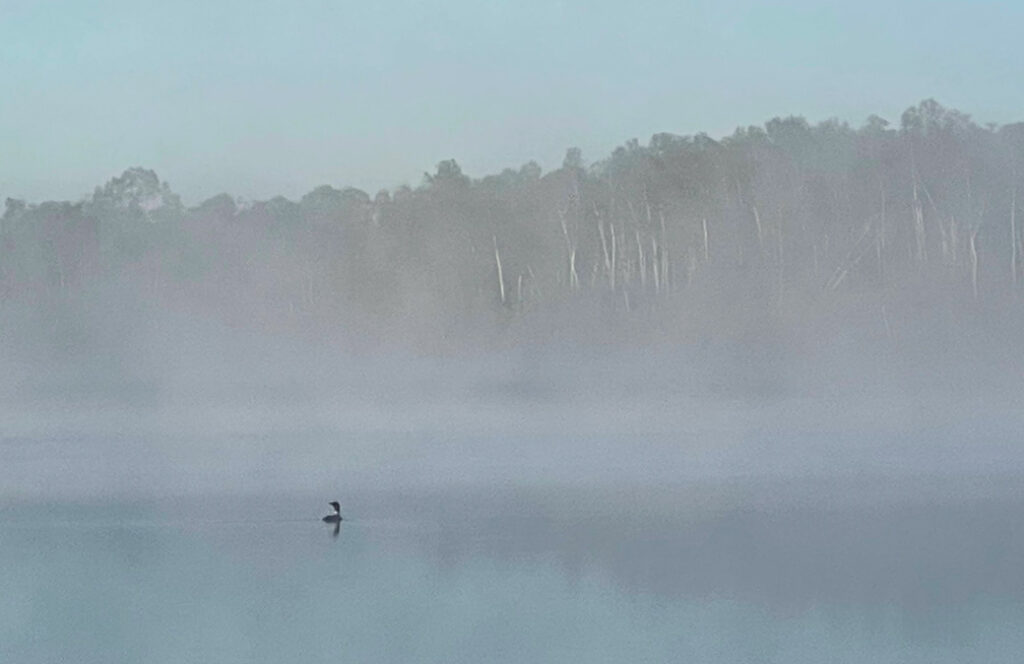
Loon on Pfeiffer Lake (Photo by Holly Scherer)
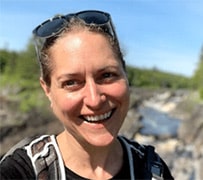
Holly Scherer is a Minnesota-based writer, photographer, outdoorswoman, and guide. She’s most at home in the great outdoors; camping, hiking, paddling, cycling, and gardening. When she’s not on an adventure, she and her husband live in the Twin Cities where they’re fond of saying, “home is where we store our outdoor gear.”

